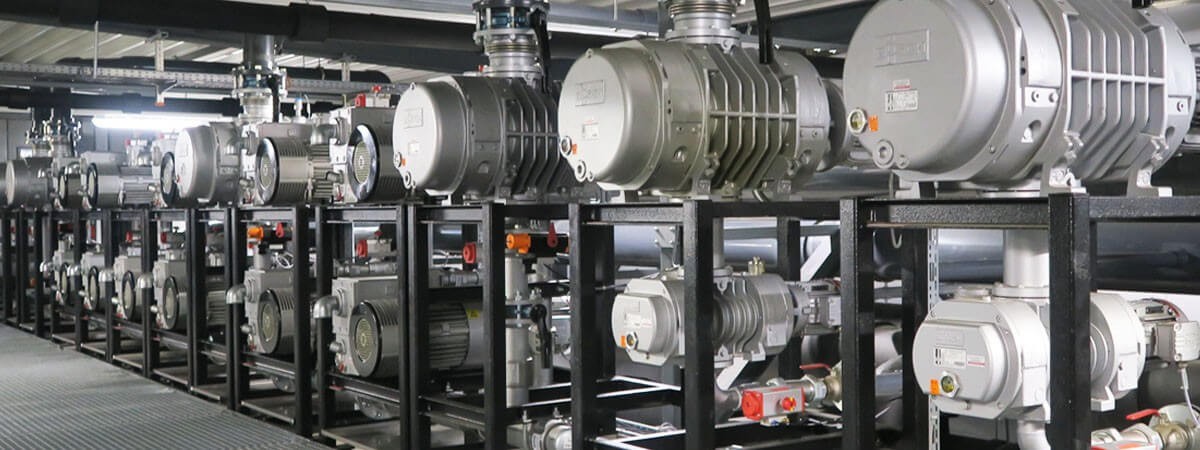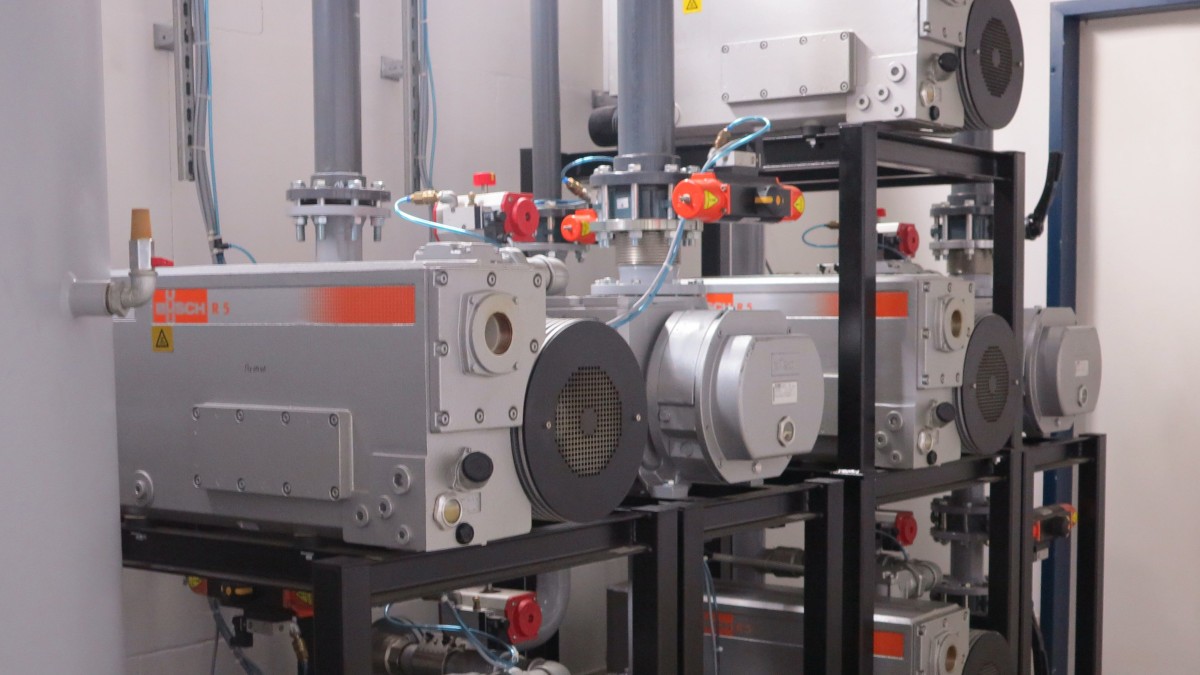Using vacuum or protective gases to
package fresh food is currently the most commonly used method for hygienically packaging food and keeping it fresh for as long as possible.
By removing as much oxygen as feasible, the vacuum reduces micro-organism activity in and on the food so that it lasts longer, even without preservatives. Selecting the right vacuum generator has a significant influence on the packaging result, the operational safety, and the economic efficiency of the packaging process.
If a plant uses multiple packaging machines that require vacuum to package foodstuffs, it may be worth considering centralizing the vacuum supply. A central vacuum supply can save a large amount of the operating costs and generate additional benefits, which we have summed up here.
Benefit 1: Energy saving
Central vacuum systems generally need fewer vacuum pumps than a decentralized vacuum supply connected directly to the individual packaging machines. This results in a corresponding reduction in energy consumption.
Benefit 2: High uptime
Central vacuum systems feature a stand-by vacuum module, which starts up automatically if one of the vacuum pumps fails. And yet, they still consist of fewer vacuum pumps than a decentralized supply.
Benefit 3: Demand-driven operation
Generally, not all packaging machines require the maximum possible vacuum performance at the same time. Packaging machines with their own vacuum pump are always operating at full power, which is why they consume a lot of energy. Central vacuum systems are controlled on a demand-driven basis. This means that switching individual vacuum modules on and off enables the vacuum system's performance to be adapted to overall demand. The use of variable speed drives allows for even finer-tuned performance adjustment. As such, the system only generates as much vacuum as needed at that point in time.
In practice, this results in even greater energy-saving potential.
Benefit 4: Easy maintenance
Any maintenance work on the individual vacuum modules in a central vacuum supply can be performed while the system is running without any restrictions. Easy accessibility to the individual vacuum pumps is guaranteed. Maintenance staff does not even need to enter the production or packaging areas.
Benefit 5: No noise emissions
Central vacuum systems are normally set up in special equipment rooms so that they are separated from production and packaging areas. This means that the vacuum pumps do not subject staff to any noise emissions at their work stations.
Benefit 6: Cleaner working environment
Because maintenance work on the vacuum pumps is performed outside the production and packaging areas, any hygienically sensitive zones will not be contaminated. Furthermore, the vacuum pumps do not have to be cleaned, unlike the vacuum pumps installed in production areas, where they can be contaminated by food residue, for example.
Benefit 7: Low room temperature
Like all machinery, vacuum pumps also generate heat. On the one hand, the extracted air is hot as it leaves the pump and, on the other hand, the vacuum pump also radiates heat itself. When installed in production or packaging areas, a vacuum pump emits this heat into the surrounding air. Because production and packaging normally take place in cooled areas, the air conditioning in these rooms needs to be increased. Centralizing the vacuum supply in a separate room eliminates this problem and allows additional energy costs to be saved on air conditioning.
Benefit 8: Long lifetime
While a vacuum pump in a decentralized setup nearly always runs at full power whenever the packaging machine is switched on, the operating hours for the same vacuum pump in a demand-driven central vacuum system are lower, increasing the lifetime as a result. Running the vacuum pumps at a constant pressure puts less strain on them. This extends the maintenance intervals.
Benefit 9: Heat recovery
Using an oil-water heat exchanger enables 50 to 70 percent of a motor's energy consumption to be recovered and used.
Benefit 10: Efficient distribution of the working load
On the one hand, the control system in a central vacuum supply ensures that only as many vacuum modules needed to cover current demand are running. On the other hand, the individual modules are used in a way that ensures they all have the same number of operating hours. This evenly distributes the working load. As a result, maintenance intervals can be planned and performed in a preventive and efficient manner.
Benefit 11: Simple expansion
Thanks to a vacuum system's modular design, additional modules can be easily added when extending packaging capacity, for example by installing a new packaging line.
Benefit 12: Lower operating costs
Reducing the number of vacuum pumps, using demand-driven control and reducing the air conditioning enables a significant amount of energy costs to be saved. Further energy-saving potential results from easier and, as a result, faster maintenance work. This can be carried out during normal working time, eliminating additional costs for weekend work. Heat recovery helps to save additional costs.
In practice, a central vacuum supply can generate energy savings of up to 70 percent and allows additional benefits to be enjoyed.
However, the decision to invest in a central vacuum system should be made with the support of a proven vacuum specialist.
For this purpose, Busch Vacuum Solutions offers packagers so-called VacuumAudits, where a vacuum expert examines the entire packaging process in detail and indicates where improvements to effectiveness and economic efficiency can be made.

